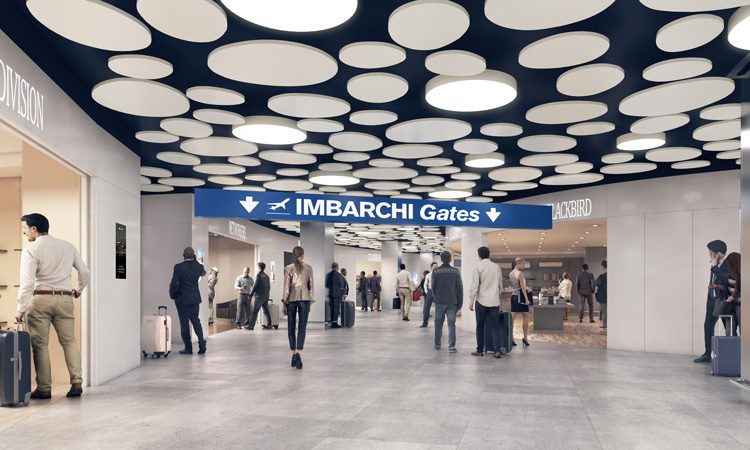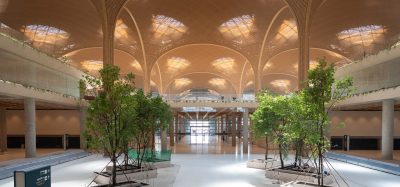Construction and design: The Bridge Project at Milan Linate Airport
- Like
- Digg
- Del
- Tumblr
- VKontakte
- Buffer
- Love This
- Odnoklassniki
- Meneame
- Blogger
- Amazon
- Yahoo Mail
- Gmail
- AOL
- Newsvine
- HackerNews
- Evernote
- MySpace
- Mail.ru
- Viadeo
- Line
- Comments
- Yummly
- SMS
- Viber
- Telegram
- Subscribe
- Skype
- Facebook Messenger
- Kakao
- LiveJournal
- Yammer
- Edgar
- Fintel
- Mix
- Instapaper
- Copy Link
Posted: 20 August 2019 | SEA Milano | No comments yet
The overhaul of any airport is a massive operation, but the construction at Milan Linate Airport is all the more challenging due to the need to redirect 700 passengers per day to Malpensa. SEA Milano describes, how despite this obstacle, they are at the heart of the redevelopment plan.


From 27 July to 27 October, Linate will be taking an operational break for a renovation focused on improving safety, modernity and efficiency. In the meantime, passengers will be flying to and from Milan Malpensa Airport. The first overhaul, to be carried out during the closure of the airport, will be re-laying the runway. The works are dedicated to non-routine maintenance and need to be done every 15‑20 years to guarantee passengers consistent levels of safety.
At the same time, there will be a re-styling of boarding areas, incorporating a renovation of the baggage handling system (BHS); installing a new state-of-the-art system. The design project includes improvements to the commercial offerings, with new shops in order to meet the needs of business customers, and a focus in the food and beverage sector. The offerings will range from local delicacies to new culinary trends and will be designed to meet all needs – from the relaxation zone to the business centre. Distinctive architectonic features have been selected to create a light-filled effect, giving the airport a more modern and iconic image.
From 27 July to 27 October, Linate will be taking an operational break for a renovation focused on improving safety, modernity and efficiency. In the meantime, passengers will be flying to and from Milan Malpensa Airport. The first overhaul, to be carried out during the closure of the airport, will be re-laying the runway. The works are dedicated to non-routine maintenance and need to be done every 15‑20 years to guarantee passengers consistent levels of safety.
At the same time, there will be a re-styling of boarding areas, incorporating a renovation of the baggage handling system (BHS); installing a new state-of-the-art system. The design project includes improvements to the commercial offerings, with new shops in order to meet the needs of business customers, and a focus in the food and beverage sector. The offerings will range from local delicacies to new culinary trends and will be designed to meet all needs – from the relaxation zone to the business centre. Distinctive architectonic features have been selected to create a light-filled effect, giving the airport a more modern and iconic image.
This work is just one step forward in the plan that will lead, in 2021, to a true ‘City Airport’ for Milan. The completely-renewed infrastructure is expected to be welcoming and functional; optimising passenger flow and offering a complete, comfortable and facilitated travel experience.
The works at Linate have already started (and are proceeding smoothly). Following the summer closure, the airport will re-open at the end of October, but the restyling project will carry on into 2021.
During this time, the modernising works at Linate will be only one step in a journey that started in 2017 with the restyling of the façade, and will conclude with the new city airport.
May 2018 saw the end of the first phase (built with an investment of €8.3 million), with the inauguration of the new look of Linate: The façade redesigned by architect Pierluigi Cerri. Simple and modern lines were chosen to give the airport a renewed appeal, with white and glass transparencies of components dominating the design. The colour choice, the architect explained, was not random, it indicated that Linate was going to incorporate the varied colours of the Milan dawn and dusk. “Why choose only one colour when you can have them all?”
In addition to the restyling of the Linate façade, the new Leonardo VIP Lounge was built, dedicated to the airport’s business customers, furnished with elements to embody the charisma and comfort of Italian style.
Having completed the first restyling works, now the second phase begins, with an investment of €21.8 million.
There will be work on the runway (2.4km long and 60m wide) and the taxiway, in accordance with the existing regulations which require maintenance every 15-20 years. The cover will be completely remade, with a total depth of about 60cm, and the concrete heads will be replaced by cement heads; a more flexible, modern and safe material. This operation is only possible during the summer period, as the works on the runway and its components require stable, clear weather and a hot climate in order to get the best results.
Other works concern the installation of four new BHS with an investment of €10.9 million. These systems enable a more efficient control of baggage; increasing security levels.
The third and final stage is the one that, once completed, will be best perceived by the passenger. It concerns the re-styling and expansion of the airport (with an investment of €27.2 million).
It will result in the creation of a new commercial area, a food and beverage area, and wider spaces, flooded with light to make the travellers’ experience more pleasant. This will continue up to the first half of 2021.
Davide Pisoni, Head of Coordination of Malpensa Airport SEA, commented on the project: “This is focused to make Linate the most innovative and smart city airport in Europe.
“This project is a challenging one, from a management, organisational and logistical point of view because it is about moving 700 people per day from Linate to Malpensa, with a total of 1,300 operators involved. Not only will approximately 200 SEA employees be involved, but also 230 people from Airport Handling, the first handler in Linate which manages Alitalia, and 270 other operators including other handlers, operators and airlines.”
Malpensa, in terms of traffic, will see a 40 per cent increase in passengers compared to the same week of 2018 as a result of this shift. Most of the passenger increase (90 per cent) will occur in Terminal 1, particularly on the Schengen area.
“We will have more than 800,000 passengers in a week,” said Pisoni, “with peaks of 122,000 passengers per day: A total increase in movements of about 55 per cent. This is a sensitive issue because it concerns the security associated with this increase. During the day the airport will endure very high peaks of hourly movements that will bring us closer to the capacity of the slopes of Malpensa which is 70 movements now. Between 10:00-12:00 and 18:00-20:00 we will have 68 hourly movements only of commercial aviation. General aviation will not be able to fly in these ranges. The cargo, on the other hand, will continue to operate normally.”
On completion of these three construction and design stages, Linate will be a modern and avant-garde city airport, dedicated to welcoming passengers and guaranteeing them the utmost in terms of safety, comfort and service.
Issue
Related topics
Airport construction and design, Airport development, Terminal operations

















